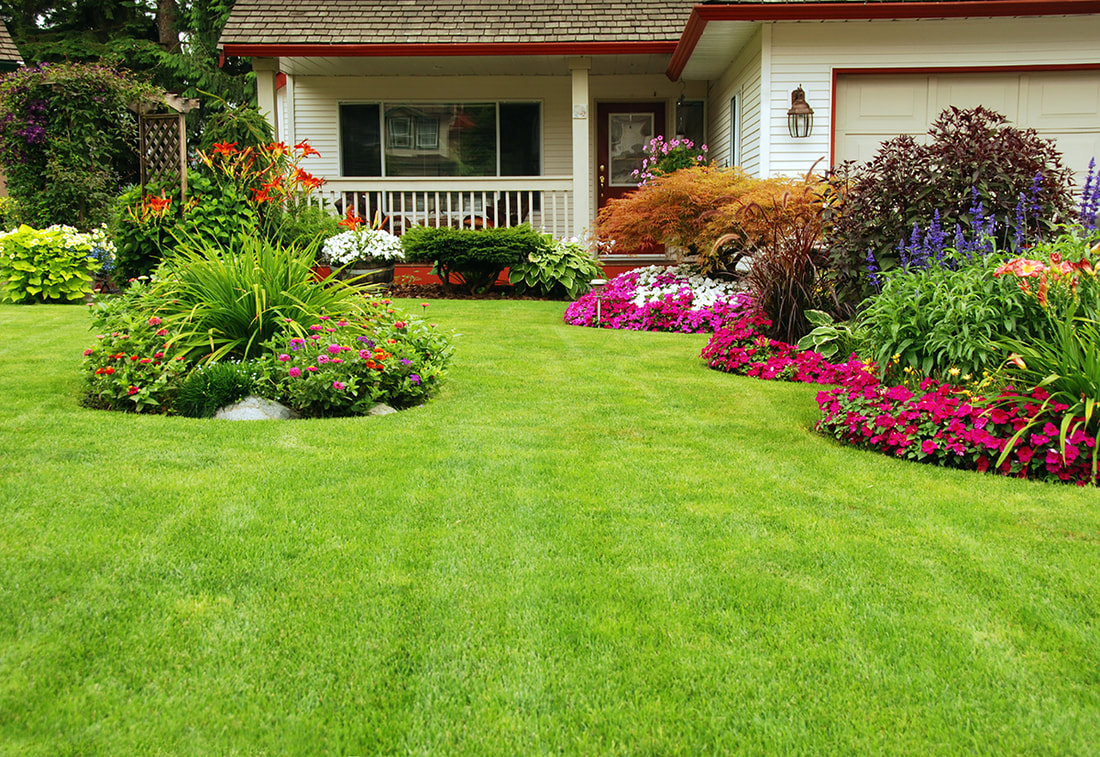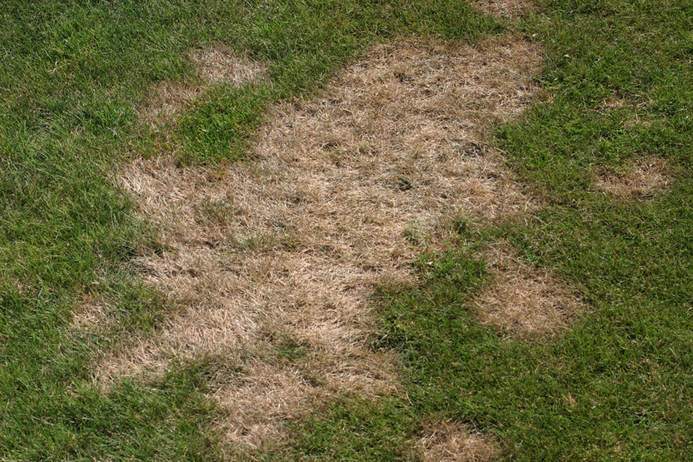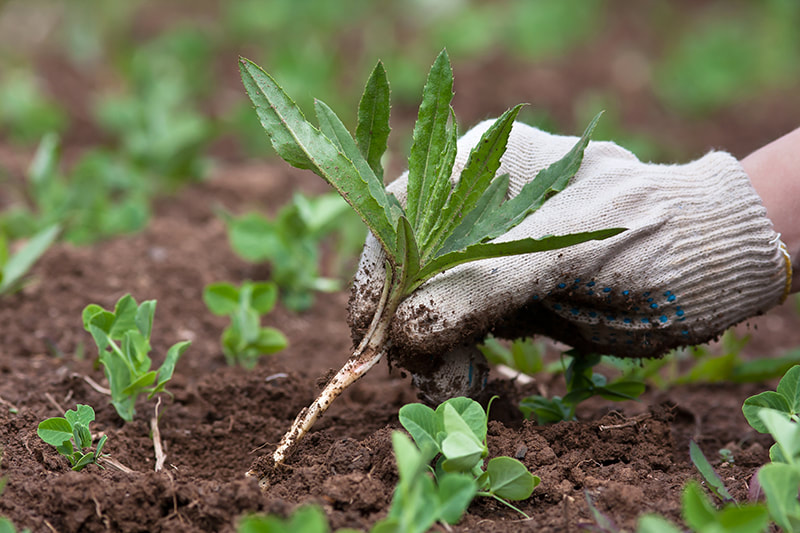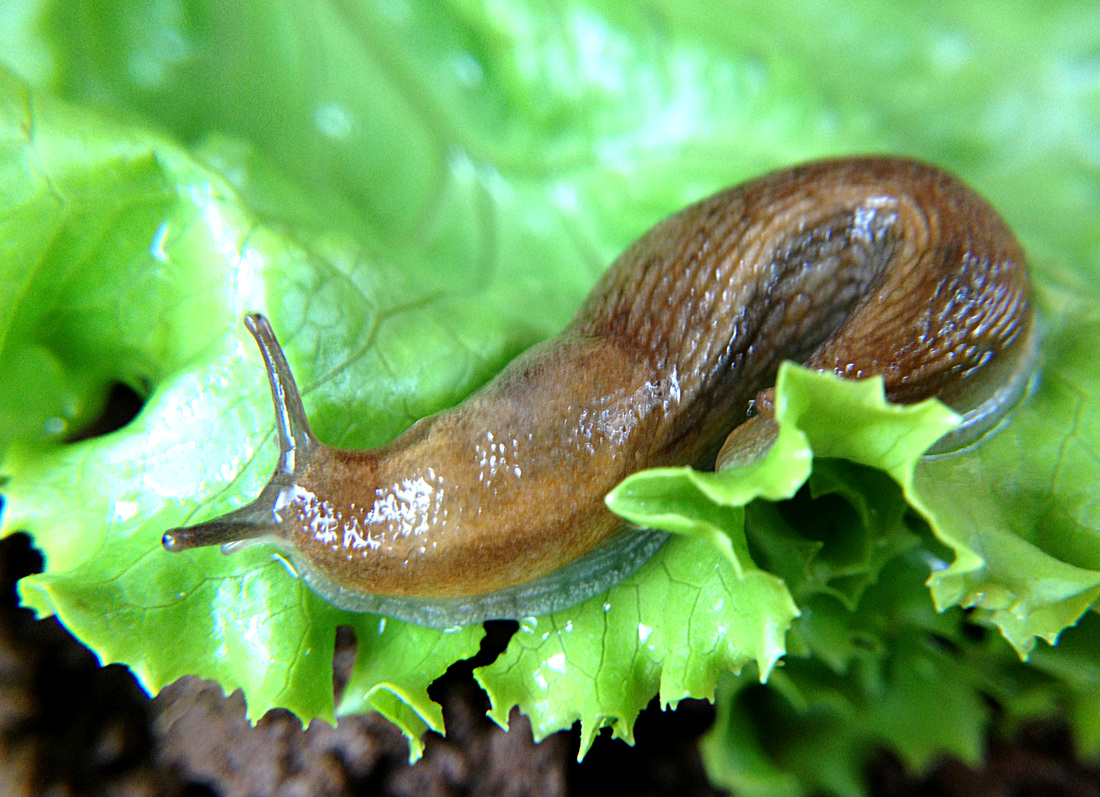|
Even though we're still in winter, now is the time to be thinking about how you will care for your yard this spring. There are several things you can easily take care of yourself, however, it can be beneficial to have a team of professionals take on the work so you know everything is being tended to in the right way and at the right times.
A professional landscape maintenance company can help you with:
If all of this sounds like a lot of work, or simply more than you care to do yourself, please give us a call at 541-729-8029 or email us. Our team of maintenance experts would be happy to help you prepare your yard for spring's beauty.
0 Comments
If you've followed our blog for a while you probably know we're big fans of mulch. And if you don't have mulch in your yard, now is the perfect time to get some down before the cold of winter really sets in. There are many reasons for why mulch is great, including the fact that it helps protect your plant beddings, any newly planted bulbs, shallow root plants, and young trees.
Mulch comes in a variety of colors and textures so you're likely to find one that meets your preferences. You can get deep browns, warm reds, and soft golden tones in both coarse and fine blends. If you're not sure which one is right for your yard, let our experts help. Here are five reasons why you should add mulch to your yard:
As a general rule of thumb, it is best to lay down mulch somewhere between 2-4" deep, and you'll want to avoid touching trunks of trees or stems of plants so you don't get any rot or disease issues. Now is the perfect time to have our team help get your yard winter ready. Give us a call today at 541-729-8029. Even with careful maintenance, bare spots can still rear their ugly heads in your lawn. If unfamiliar with what to do, bare spots can quickly spread and become costly lawn repairs.
Before beginning any lawn repairs, you need to first determine the source of your problem. Bare spots in your lawn can be the result of heavy foot traffic, drought (or in other words, a lack of watering), disease, chemical burn, and even weed or insect infestation. Determining the cause for your lawn's bare spots will help you in planning a corrective course of action and help you prevent it from continuing. If heavy foot traffic is the cause for your lawn's bare spots, look for a way to keep traffic off of that area. A nice, long-term solution includes modifying your landscape with the addition of stepping stones, a gravel pathway or a barrier that would reroute traffic and protect that area of your lawn. If a lack of water is the issue, consulting an irrigation specialist could be helpful. After analysis of your irrigation system, a professional can make recommendations for system adjustments so that all areas of your yard are adequately watered. If insects or disease are the cause, determine the specific cause. Consulting with a landscape maintenance professional can help with identification and they can make suggestions for the most effective treatment. Most treatments will need to be applied and allowed to work before you can grow new grass. The treatment product instructions will tell you how long to wait before sowing new seed. The team at Graham Landscape & Design has tremendous experience in remedying a variety of landscape blights, including bare spots, so that you can have a beautiful lawn. If you live in the Eugene-Springfield, Oregon area, give us a call today to get a free evaluation and estimate. 541-729-8029 Keeping a lawn healthy and green can feel like an uphill battle, especially when dealing with weeds. Lawns are also susceptible to disease, making things even more complicated. Here's how to identify three common lawn diseases, their causes, and what you can do to turn things around. Dollar Spot With Dollar Spot, grass tends to die in small, circular spots 4 to 12 inches wide. As the spots grow, they may fuse together creating big, brown blotches in your lawn. Favorable conditions for Dollar Spot include mild to warm weather (60 to 85 degrees), excessive moisture, and under-fertilization. Thatch in your lawn can also encourage this disease. What you can do: 1. Raise the cutting height of your mower to 3 to 4 inches to allow grass leaves to dry between watering. 2. Fertilize your lawn, starting in the spring, at least a few times throughout the year, in regular intervals. 3. Adjust your sprinklers so you're watering deeply but infrequently, ideally in the early morning hours. Rust With Rust, grass blades develop dust-like, orange-colored spores. Areas in your lawn that are affected will have a rusty look. Rust doesn't typically hurt the grass but it can be a nuisance and detract from that lush, green aesthetic you'd probably prefer. Over time, it can lessen the vigor of your grass which can attract other diseases to infect your lawn. Favorable conditions for Rust include mild temperatures (60 to 75 degrees), dry weather conditions. Over-fertilization and heavy thatch can also encourage the spread of Rust. What you can do: 1. Mow your lawn frequently at a moderate height (2 to 3 inches) and rinse off lawn equipment to prevent the spread of the disease. 2. Rake and remove any thatch that becomes more than a half-inch deep. 3. Water early in the day so the grass has a chance to dry before the warmest point of the day. Pythium Blight
With Pythium Blight, grass will develop orange to copper-colored circular spots from 1 to 6 six inches in diameter. These grow quickly, however, and can cause large areas of discoloration and dead turf in your lawn, especially in areas with poor drainage. Favorable conditions for Pythium Blight include warm to hot, humid weather (think of those days when it doesn't even seem to cool down at night) and lush lawns that hold a lot of moisture. What you can do: 1. Watch your lawn for what appear to be darker green areas that might look wet or dewy (this is due to the greasy or oiliness of infected grasses). At first sign, you will want to introduce the use of a fungicide because this disease is a difficult one to control. 2. Make sure you address any drainage issues with your lawn to remove excess water build-up. 3. Rake and remove any thatch that becomes more than a half-inch deep. In the Eugene-Springfield area, Graham Landscape & Design works with homeowners and business owners to maintain healthy lawns and beautiful landscapes. If you suspect you're dealing with lawn disease or could use some help with maintenance to prevent disease, please give us a call at 541-729-8029 to schedule a consult today. Beyond natural slug treatments, did you know the design of your yard, along with the materials and features used can also help deter the presence of these pests? Here are some great tips to help manage slugs through smart design.
If you'd like help in designing a garden that's slug-unfriendly, let us know. We can help. Give our team a call today at 541-729-8029. Slugs are in every garden and cause more damage than most other invaders. Commercial slug killers are available, but they can be toxic to birds and other wildlife and tend to be less effective after it rains which is when slugs are the most active. So, what can you do? Here are a few tips for how you can tackle the slugs in your garden, naturally.
Copper Small strips of copper can be placed around flowerpots or raised beds as obstructions for slugs to crawl over. Cut 2″ strips of thin copper and wrap around the lower part of flower pots, like a ribbon. Or set the strips in the soil on edge, making a “fence” for the slugs to climb. Check to make sure no vegetation hangs over the copper, which might provide a ‘bridge’ for the slugs. Copper barriers also work well around wood barrels used as planters. Lava Rock Like diatomaceous earth, slugs will avoid the abrasive surface of lava rock. Lava rock can be used as a barrier around plantings but should be left mostly above soil level. Otherwise, dirt or vegetation soon forms a bridge for slugs to cross. Beetles Rove beetles are very good at eating slug eggs and baby slugs. You can encourage these beetles by creating homes for them by turning a plastic box upside down over a pile of straw with a small pile of rocks inside to hide in or a pile of rocks under some overhanging plants. Seaweed If you have access to seaweed, it’s well worth the effort to gather some. Seaweed is a good soil amendment for the garden and a natural repellent for slugs. Mulch with seaweed around the base of plants or perimeter of planter bed. Pile it on 3″ to 4″ thick – when it dries, it will shrink to just an inch or so deep. Seaweed is salty, and slugs avoid salt. Push the seaweed away from plant stems, so it’s not in direct contact. During hot weather, seaweed will dry and become very rough which also deters the slugs. Beer Slugs are attracted to beer. Set a small amount of beer in a wide shallow jar buried in the soil up to its neck. Slugs will crawl in and drown. Take the jar lid and prop it up with a small stick so rain won’t dilute the beer. Leave space for slugs to enter the trap. Watering Schedule Far and away the best course of action against slugs in your garden is a simple adjustment in the watering schedule. Slugs are most active at night and are most efficient in damp conditions. Avoid watering your garden in the evening if you have a slug problem. Water in the morning – the surface soil will be dry by evening. Studies show this can reduce slug damage by 80%. If you suffer from slugs destroying the plants in your yard or garden, we can help. Our skilled maintenance team can work with you on a plan for preserving your plants and managing pests. Give us a call today: 541-729-8029 Weeds. They are the bain of every beautiful lawn and flowerbed. You know what we're talking about. You spend a great deal of time to plan, plant, and cultivate a beautiful yard and then BAM! You spot weeds. Never just one, but little clusters here and there. They're everywhere! So, what are you going to do?
Tips for dealing with weeds in your yard:
While these tips can help manage the weed situation in your yard, know that despite your best efforts, the weeds will keep coming back. Weed control is just that — control, not eliminate. Keeping weeds at bay requires ongoing monitoring and treatment. If that level of commitment or use of time sounds unappealing, consider hiring a landscaper who offers maintenance services. Together, you can discuss the priorities for your yard, how and when you want services, and come to an agreement that works for your budget. If you live in the Eugene-Springfield area, Graham Landscape & Design can help control the weeds in your lawn, and so much more. Please give us a call for a no-obligation quote today. 541-729-8029. It's happened to the best of us... We work hard to fertilize and maintain the perfect lawn but then it happens... a brown spot or two. How could this be? We did everything right! Well, eventually, no matter how diligent you are, you're bound to experience a lawn pest or two. Here are some common lawn pests in the Pacific Northwest and what you can do to get rid of them. Crane Fly In the Pacific Northwest, there are many native crane flies and they serve as decomposers in our streams and forests. However, they are also known for wreaking havoc on our lawns. It's the larvae, also known as leather jackets, that feed on the roots of plants, mainly turf grass, and cause the most damage. During the summer months, the adult crane flies emerge, mate, and deposit their eggs. Unfortunately, because of their abundance, it isn't practical to try to kill them at this point in the year. You're better off treating the problem in the spring (typically March-April) if the lawn doesn't recover over the winter. You'll know you need to do something if you dig out a patch of lawn 12 inches square and count more than 25-30 larvae. You can use beneficial nematodes (microscopic worms) or insecticides, available at lawn and garden stores. Slugs Every garden has slugs, and they can cause more damage than most garden invaders. Like the crane fliers, slugs help with decomposition and are beneficial in creating mulch, however, when they choose to chomp on your hostas, hydrangeas, etc., they're not so loved. While there are several pesticide choices at your local lawn and garden store, we recommend a more natural approach. Here are a few that are fairly easy to implement.
If you find you're dealing with more lawn pests than you know what to do with, please give the Graham Landscape & Design Maintenance Crew a call. We can come out, assess your situation, and provide the necessary treatments to get your yard back into shape. 541-729-8029
|
OUR BLOG
Check here to see what we've been up to! Categories
All
|
|
|
Copyright © Graham Landscape Maintenance & Design LLC in Eugene Oregon. All rights reserved.
LCB # 8920 541-729-8029 34024 Old Willamette Hwy S., Eugene, OR 97405
Offering Landscape Design and Maintenance in Albany, Coburg, Corvallis, Cottage Grove, Eugene, Junction City, Roseburg, Springfield, Veneta and Surrounding Areas
LCB # 8920 541-729-8029 34024 Old Willamette Hwy S., Eugene, OR 97405
Offering Landscape Design and Maintenance in Albany, Coburg, Corvallis, Cottage Grove, Eugene, Junction City, Roseburg, Springfield, Veneta and Surrounding Areas











 RSS Feed
RSS Feed
